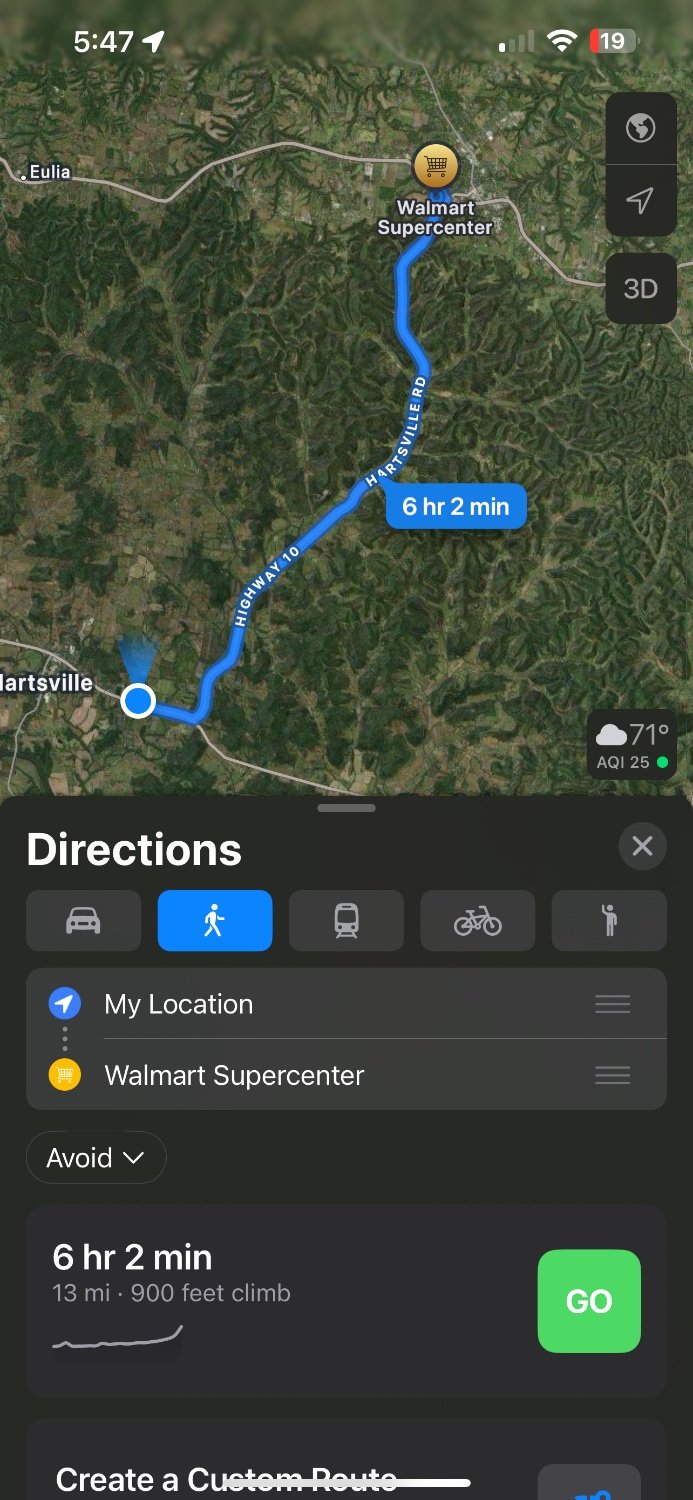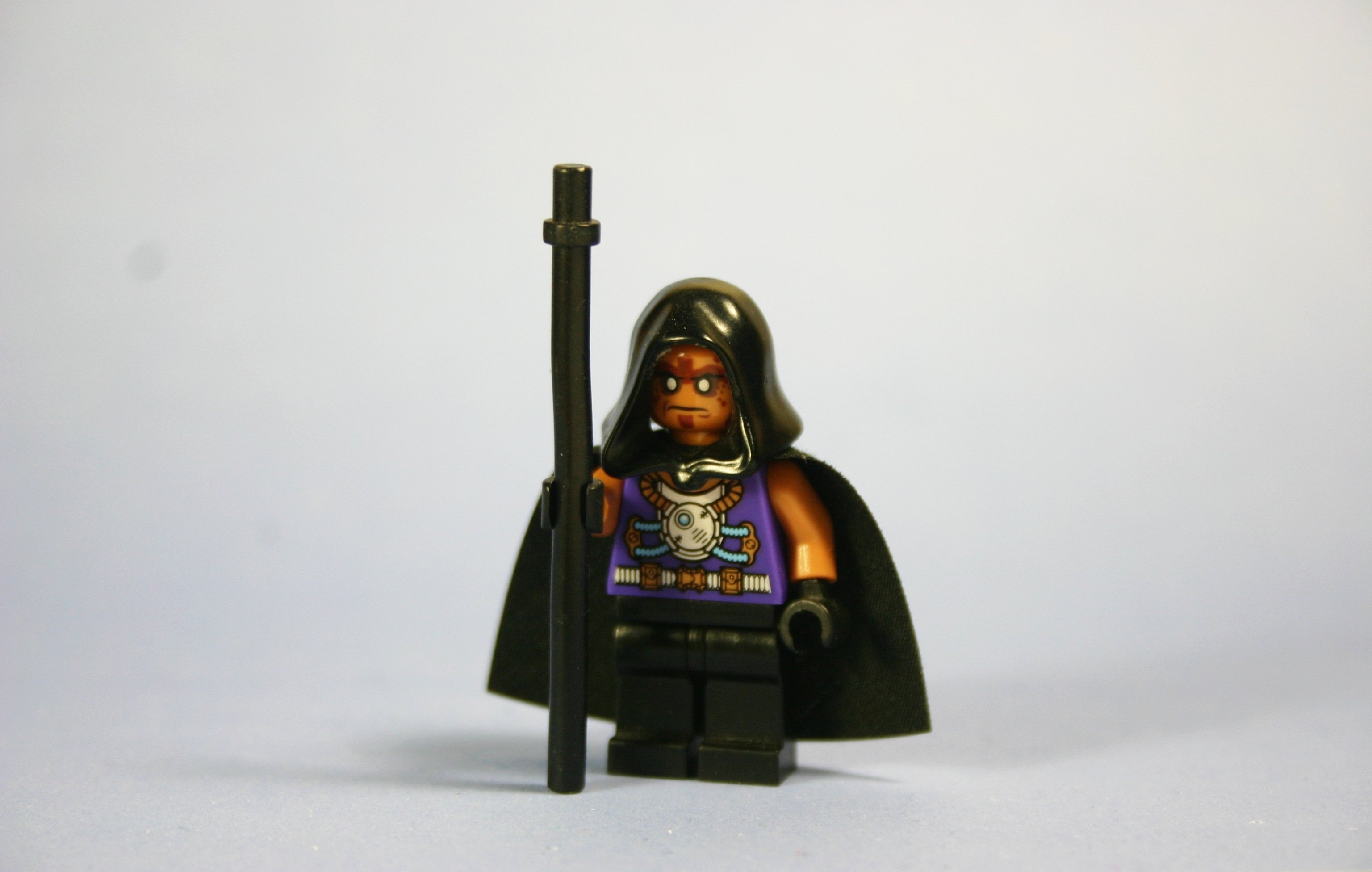I’ve heard the legends of having to drive to literally everywhere (e.g. drive thru banks), but I have no clue how far apart things are.
I live in suburban London where you can get to a big supermarket in 10 minutes of walking, a train station in 20 minutes and convenience stores are everywhere. You can get anywhere with bus and train in a few hours.
Can someone help a clueless British lemmyposter know how far things are in the US?
EDIT
Here are my walking distances:
- To the nearest convenience store: 250m
- To the nearest chain supermarket: 350m
- To the bus stop: 310m
- To the nearest park: 400m
- To the nearest big supermarket: 1.3km
- To the nearest library: 1.2km
- To the nearest train station: 1km
Straight-line distance to Big Ben: 16km
Many Americans still live in what I’d call “15 minute cities” if we consider it as driving instead of walking.
My closest superstore an hour drive away. 60 miles. The closest grocer is 12 miles. My closest international airport is 1.5 hours away. It is also the closest regional airport. 85 miles. The closest national park is 3 hours. I live 6 miles from my closest town.
There are no passenger trains, busses, or taxis. Or uber.
Rural america is empty. And spread out. We get along fine, but public transit will never exist here. Cars are the only way.
Your measurements are almost exactly mine, down to the closest town.
Yep. I live the same life in a very rural and somewhat remote area also. Population density is very low making modern conveniences non-existent and not ever likely to exist in such places.
Other things to consider: Kids often ride a school bus for an hour or more to and from school. Nearest hospital is 40 miles away. And it’s a Level 3. This means it’s pretty much a bandaid station. I used to work as a medic up here. The number of times I had to literally turn the lights on in the ER and wait for the doctor to get out of bed and drive to the hospital would shock you. Nearest ambulance is 20 miles away and you better hope they aren’t already busy when you dial 911. Because if they are, it could be several hours before they can get to you. The US Postal Service will NOT deliver mail to my home. I need to pay $160 a year for a post office box, (no free delivery for me!), and drive the 12 mile round trip to town, (Pop: 150), just to get my mail.
The railway used to be the default for rural areas. It could be again.
So how does rail solve the Last Mile problem? It does no good to say “take the train” if the nearest train station is 60 miles away. And is it the best use of a train to run tracks to a town/village with a population 150 people or less?
Light rail and buses? Even the most remote rural towns in Japan have small shuttle buses that serve even the sparsest areas. The great thing about public transit is that it is actually scalable if there’s political will to make it happen. A shuttle bus can connect a rural neighborhood to a big train station within 60 minutes. The cool factor of transit is mix and matching several types of transport to cover the most area with the highest mobility for the widest array of people.
Japan still has a higher density of population and far less landmass to cover. My nearest neighbor is over a mile away. Are you going to build a bus route or light rail just for me? Or through county, state, and federal forest lands? Logistics is a removed.
Only where the rails went. We’d have to replace all the roads with light rails.
It would take more than that. The problem is almost not solvable under present economic and political conditions.
Oh, I agree. There are wide swaths of the country that rail cannot service. Individual homes out in the sticks, farmland, etc. they’d need a car or truck just to get to the train station.
Not for last mile, but should be a much larger part of the picture.
Where I grew up in rural texas: these are current times as I still go there regularly to visit.
Convenience store: 10 km down a major highway
Market: 20 km
The nearest Walmart : 58 km <-- this used to be the only option until they built … The nearest chain grocery: 21 km
Train: 60 km (Amtrak)
Park: 8km. Down a road with a 60 mph (96 km/h) speed limit. But definitely walkable.
Bus stop: ??? There is no public transportation in the town of under 2000 people. Google maps won’t even give me a suggestion so…I have no idea. Does a greyhound count?
Library: 21 km
Username checks out.
Just for fun, I decided to check my distances against yours
Here are my walking distances:
- To the nearest convenience store: 1.13km
- To the nearest chain supermarket: 2.74km
- To the bus stop: 33.8km
- To the nearest park: 2.41km
- To the nearest *big* supermarket: 17.7km
- To the nearest library: 2.41km
- To the nearest train station: 24.14km
- Straight-line distance to Nashville’s “The Batman Building” (closest approximation to a large unique cityscape building): 67.76km
- To the bus stop: 33.8km
Is that a typo, or can you just randomly stand at the side of the road and flag down a bus so you don’t need as many formal bus stops?
Because that’s wild.
Haha

Not a typo. There are no buses unless you go to one of the neighboring cities. I live too far from anywhere that has buses. You either have to walk, or… you can drive! Like everybody else in the US without access to any sort of public transportation remotely close to their home…
Edit: Here’s my nearest walking directions to a large supermarket

I live in a small suburb right outside of a major us city.
To the nearest convenience store: .6 km To the nearest chain supermarket: .9 km To the bus stop: .3km To the nearest park: 1.0km To the nearest big supermarket: .9km To the nearest library: 1.2km To the nearest train station: .6km Straight-line distance to big Ben: 5708 km
You certainly got me on big Ben distance.
But this is why the question is kind of silly. America is a huge, diverse place. When I lived in NYC, I was probably closer to everything than you. Where I grew up in an almost rural area, the closest thing was over 5km away. And this isn’t even all that bad because I had a friend who grew up in an unincorporated area where she had to drive 30min just to get her mail.
Here are my walking distances in Seattle:
- Convenience store: 150m
- Chain supermarket: 30m
- Big supermarket: 1.6km
- Bus stop: 10m
- Park: 100m
- Library: 150m
- Train station: 2km
Straight-line distance to Space Needle: 4.3km
I live in the residential area within the limits of a large US city.
To the nearest convenience store: 0.9 km To the nearest chain supermarket: 2.6 km To the bus stop: 0.3 km To the nearest park: 0.8 km To the nearest big supermarket: 3.1 km To the nearest library: 2.7 km To the nearest train station: 2.9 kmAnd I’d argue that these numbers are remarkably good for people in my situation as well.
Let’s give it a shot. I live in the suburbs of Lincoln, Nebraska, which is an average-sized college town in the US (about 300k residents):
- Nearest convenience store: 1.1 miles/1.7km (we often do walk there, takes about 20 minutes)
- Nearest chain supermarket/big supermarket (they are often one in the same here): Target @ 1.5 miles/2.4km
- Bus stop: 1.3 miles/2.1km
- Nearest park: 0.6 miles/965m
- Nearest public library: 3.5 miles/5.6km
- Nearest train station: 9.1 miles/14.6km (we don’t really use trains much at all in the US, though)
At this point I just want Japan to realize that not every American lives in walking distance of Los Angeles and NYC, and none of us live in walking distance of both at once.
Seriously, stop basing your marketing strategies around “Major US Cities Only!”
The nearest “Major US” City to me is like a day’s drive, and I mean literally you don’t stop driving for an entire day.
I don’t know. I do kinda enjoy the tourist conversation on the Cannon Ball run.
You can get to New York from LA in 24 hrs, you just have to break a ton of laws.
I’ve found it’s the best way to really drive home how good the Interstate is while also permanently embedding the real size of the continent.
I want to add that in many places in the US it is not just the distance, but the danger and outright discouragement of walking somewhere. For example, I contemplated using a train to get to Lego Land in California from Oceanside, California. After getting off of the train I would have to walk 1.3 miles, which is only a minor inconvenience. However, after reviewing the walking route google has this qualifier: “Use caution - may involve errors or sections not suited for walking”. This prompted me to review the walk using street view and I came to the conclusion that there was not a safe route.
This is just one example of something that I think should specifically be available. There are many places where walking is encouraged and convenient, but it is by no means universal.
In my home town getting to most basic necessities took 20min driving. Mind you that was the capital city of my state
Nashville TN suburbs and here are my walking distances:
To the nearest convenience store: 6km To the nearest chain supermarket: 11km To the bus stop: 6km To the nearest park: 4.1km To the nearest big supermarket: 12km To the nearest library: 13km To the nearest train station: 25kmBut what’s your straight line distance to the Parthenon?
Nice try stalker! (Jk)
Straight line distance to the Parthenon: 9101.70 km
Here, let me show you.

Having a large country doesn’t necessarily mean that your cities and towns have to spread like crazy. Russia is even larger but the cities are much more compact than US cities.
This graphic doesn’t answer OP’s question at all. Madrid and Barcelona are two radically different cities just like New York and Los Angeles are two radically different experiences. And it has nothing to do with how big a country is.
deleted by creator
I live in Jersey (New). As a background, I’m at the edge of civilization, I like to joke. If you go west of me, there’s farms, what we call mountains, hiking, all that kinda stuff. To the east of me, it gets more and more urban until you get to NYC.
Here are my walking distances:
- To the nearest convenience store: half a mile
- To the nearest chain supermarket: 1 mile
- To the bus stop: half a mile
- To the nearest park: quarter mile
- To the nearest big supermarket: 1 mile (same as above)
- To the nearest library: I am 1 mile from two different libraries, pretty much smack in the middle.
- To the nearest train station: 1 mile
Adding:
- To the nearest mall: 1 mile
- To the nearest gym: quarter mile
- To the nearest hospital: 1.1 miles
- To the nearest ice cream parlor: .9 miles
- To the nearest record store: .9 miles
- To the nearest arcade: .9 miles
Straight-line distance to Big Ben: Just shy of 3500 miles. Straight-line distance to the Statue of Liberty: 30 miles
Your location sounds pretty optimal.
This is central Florida, on the east coast. The chain supermarket is Publix, the big supermarket is Walmart. Brightline is supposed to build a train station nearby, but they haven’t started yet.
To the nearest convenience store: 1.9 km To the nearest chain supermarket: 5.7 km To the bus stop: 3.8 km To the nearest park: 1.1 km To the nearest big supermarket: 12.1 km To the nearest library: 7.3 km To the nearest train station: 75.5 kmStraight-line distance to Big Ben: 6,967 km
deleted by creator












